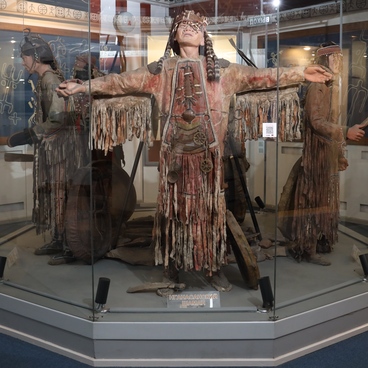The bowhead, or polar whale, is the third heaviest whale in the world, after the blue whale and the fin whale. It can be as long as 18 meters long and as heavy as 100 tons. The subcutaneous fat layer protecting it from the cold is about 60 centimeters thick. The bowhead whale can move at speeds of up to 20 kilometers per hour and stay deep underwater without surfacing for up to half an hour.
The U-shaped mandible of the whale is covered with distinctive light spots that contrast with its dark skin. Of all cetaceans, the bowhead whale has the largest mouth, with approximately 300 baleen plates up to 4.5 m long. Its skull makes up one-third of its total body length.
In order to eat, the polar whale filters water through its baleen and ingests organisms deposited on it. The bowhead whale’s diet includes crustaceans, zooplankton and benthic organisms. It plays an important role in the ecosystem, regulating the abundance of plankton in the Arctic Ocean.
The bowhead whale is the only whale found in the Northern Hemisphere: it can be found in the Davis Strait, Hudson Bay and in the Sea of Okhotsk and the Bering Sea. Historically, whales were hunted for their meat, fat and baleen. They were easy prey because of their slowness and huge size.
Before mass whaling began in the 17th century, the whale population was so large that, according to captains’ accounts, ships had to push apart pods of animals to sail across the Arctic Ocean. Hunting bowhead whales has been officially banned worldwide since 1935. By the early 2020s, their total number was estimated at 10,000 specimens, and the polar whale is listed as an endangered species on the Russian Red List.
The age of whales is estimated by the condition of
the lens of the eye. The average age of animals killed when being hunted was
60–70 years, but some specimens could be as old as 200 years. Bowhead whales
have one of the longest lifespans of any mammal, they are not susceptible to
disease, and humans remain their main enemy.


